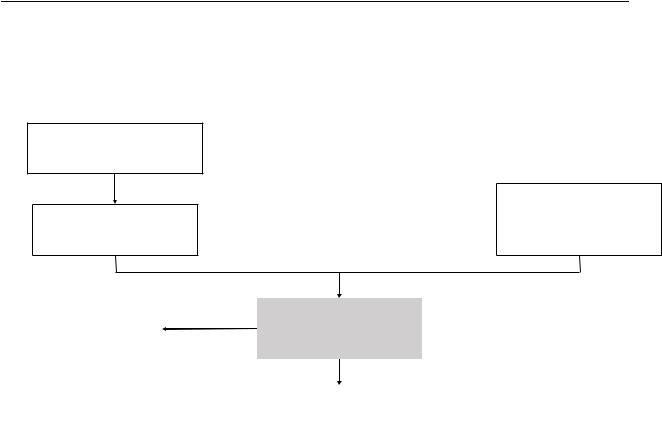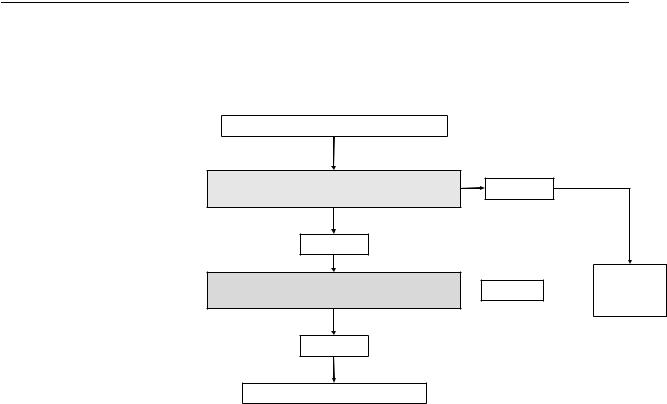
SSC-COVID19-GUIDELINES
.pdf
Intensive Care Medicine
GUIDELINES |
Un-edited accepted proof* |
198.de Wit E, Feldmann F, Cronin J, Jordan R, Okumura A, Thomas T, Scott D, Cihlar T, Feldmann H, (2020) Prophylactic and therapeutic remdesivir (GS-5734) treatment in the rhesus macaque model of MERS-CoV infection. Proceedings of the National Academy of Sciences of the United States of America;doi: 10.1073/pnas.1922083117
199.Mulangu S, Dodd LE, Davey RT, Jr., Tshiani Mbaya O, Proschan M, Mukadi D, Lusakibanza Manzo M, Nzolo D, Tshomba Oloma A, Ibanda A, Ali R, Coulibaly S, Levine AC, Grais R, Diaz J, Lane HC, Muyembe-Tamfum JJ, Group PW, Sivahera B, Camara M, Kojan R, Walker R, Dighero-Kemp B, Cao H, Mukumbayi P, Mbala-Kingebeni P, Ahuka S, Albert S, Bonnett T, Crozier I, Duvenhage M, Proffitt C, Teitelbaum M, Moench T, Aboulhab J, Barrett K, Cahill K, Cone K, Eckes R, Hensley L, Herpin B, Higgs E, Ledgerwood J, Pierson J, Smolskis M, Sow Y, Tierney J, Sivapalasingam S, Holman W, Gettinger N, Vallee D, Nordwall J, Team PCS, (2019) A Randomized, Controlled Trial of Ebola Virus Disease Therapeutics. The New England journal of medicine 381: 2293-2303
200.Falzarano D, de Wit E, Martellaro C, Callison J, Munster VJ, Feldmann H, (2013) Inhibition of novel beta coronavirus replication by a combination of interferon-alpha2b and ribavirin. Scientific reports 3: 1686
201.Falzarano D, de Wit E, Rasmussen AL, Feldmann F, Okumura A, Scott DP, Brining D, Bushmaker T, Martellaro C, Baseler L, Benecke AG, Katze MG, Munster VJ, Feldmann H, (2013) Treatment with interferon-alpha2b and ribavirin improves outcome in MERS-CoV-infected rhesus macaques. Nature medicine 19: 1313-1317
202.Momattin H, Mohammed K, Zumla A, Memish ZA, Al-Tawfiq JA, (2013) Therapeutic options for Middle East respiratory syndrome coronavirus (MERS-CoV)--possible lessons from a systematic review of SARS-CoV therapy. International journal of infectious diseases : IJID : official publication of the International Society for Infectious Diseases 17: e792-798
203.Hart BJ, Dyall J, Postnikova E, Zhou H, Kindrachuk J, Johnson RF, Olinger GG, Jr., Frieman MB, Holbrook MR, Jahrling PB, Hensley L, (2014) Interferon-beta and mycophenolic acid are potent inhibitors of Middle East respiratory syndrome coronavirus in cell-based assays. The Journal of general virology 95: 571-577
204.Arabi YM, Shalhoub S, Mandourah Y, Al-Hameed F, Al-Omari A, Al Qasim E, Jose J, Alraddadi B, Almotairi A, Al Khatib K, Abdulmomen A, Qushmaq I, Sindi AA, Mady A, Solaiman O, Al-Raddadi R, Maghrabi K, Ragab A, Al Mekhlafi GA, Balkhy HH, Al Harthy A, Kharaba A, Gramish JA, AlAithan AM, Al-Dawood A, Merson L, Hayden FG, Fowler R, (2019) Ribavirin and Interferon Therapy for Critically Ill Patients With Middle East Respiratory Syndrome: A Multicenter Observational Study. Clinical infectious diseases;doi: 10.1093/cid/ciz544
205.Chan JF, Chan KH, Kao RY, To KK, Zheng BJ, Li CP, Li PT, Dai J, Mok FK, Chen H, Hayden FG, Yuen KY, (2013) Broad-spectrum antivirals for the emerging Middle East respiratory syndrome coronavirus. The Journal of infection 67: 606-616
206.Arabi YM, Alothman A, Balkhy HH, Al-Dawood A, AlJohani S, Al Harbi S, Kojan S, Al Jeraisy M, Deeb AM, Assiri AM, Al-Hameed F, AlSaedi A, Mandourah Y, Almekhlafi GA, Sherbeeni NM, Elzein FE, Memon J, Taha Y, Almotairi A, Maghrabi KA, Qushmaq I, Al Bshabshe A, Kharaba A, Shalhoub S, Jose J, Fowler RA, Hayden FG, Hussein MA, And the Mtg, (2018) Treatment of Middle East Respiratory Syndrome with a combination of lopinavir-ritonavir and interferon-beta1b (MIRACLE trial): study protocol for a randomized controlled trial. Trials 19: 81
207.Vincent MJ, Bergeron E, Benjannet S, Erickson BR, Rollin PE, Ksiazek TG, Seidah NG, Nichol ST, (2005) Chloroquine is a potent inhibitor of SARS coronavirus infection and spread. Virol J 2: 69
208.Wang M, Cao R, Zhang L, Yang X, Liu J, Xu M, Shi Z, Hu Z, Zhong W, Xiao G, (2020) Remdesivir and chloroquine effectively inhibit the recently emerged novel coronavirus (2019-nCoV) in vitro. Cell Res;30:269-271
209.Yao X, Ye F, Zhang M, Cui C, Huang B, Niu P, Liu X, Zhao L, Dong E, Song C, Zhan S, Lu R, Li H, Tan W, Liu D, (2020) In Vitro Antiviral Activity and Projection of Optimized Dosing Design of
© European Society of Intensive Care Medicine and the Society of Critical Care Medicine 2020 |
58 |

Intensive Care Medicine
GUIDELINES |
Un-edited accepted proof* |
Hydroxychloroquine for the Treatment of Severe Acute Respiratory Syndrome Coronavirus 2 (SARS-CoV-2). Clin Infect Dis;doi: 10.1093/cid/ciaa237
210.Touret F, de Lamballerie X, (2020) Of chloroquine and COVID-19. Antiviral Res 177: 104762
211.Roques P, Thiberville SD, Dupuis-Maguiraga L, Lum FM, Labadie K, Martinon F, Gras G, Lebon P, Ng LFP, de Lamballerie X, Le Grand R, (2018) Paradoxical Effect of Chloroquine Treatment in Enhancing Chikungunya Virus Infection. Viruses;doi: 10.3390/v10050268
212.Gao J, Tian Z, Yang X, (2020) Breakthrough: Chloroquine phosphate has shown apparent efficacy in treatment of COVID-19 associated pneumonia in clinical studies. Biosci Trends; 4:72-73
213.multicenter collaboration group of Department of S, Technology of Guangdong P, Health Commission of Guangdong Province for chloroquine in the treatment of novel coronavirus p, (2020) [Expert consensus on chloroquine phosphate for the treatment of novel coronavirus pneumonia]. Zhonghua Jie He He Hu Xi Za Zhi 43: E019
214.Cortegiani A, Ingoglia G, Ippolito M, Giarratano A, Einav S, (2020) A systematic review on the efficacy and safety of chloroquine for the treatment of COVID-19. J Crit Care;doi: 10.1016/j.jcrc.2020.03.005
215.Brunner HI, Ruperto N, Zuber Z, Keane C, Harari O, Kenwright A, Lu P, Cuttica R, Keltsev V, Xavier RM, Calvo I, Nikishina I, Rubio-Perez N, Alexeeva E, Chasnyk V, Horneff G, OpokaWiniarska V, Quartier P, Silva CA, Silverman E, Spindler A, Baildam E, Gamir ML, Martin A, Rietschel C, Siri D, Smolewska E, Lovell D, Martini A, De Benedetti F, Paediatric Rheumatology International Trials Organisation P, Pediatric Rheumatology Collaborative Study G, (2015) Efficacy and safety of tocilizumab in patients with polyarticular-course juvenile idiopathic arthritis: results from a phase 3, randomised, double-blind withdrawal trial. Annals of the Rheumatic Diseases 74: 1110-1117
216.Genovese MC, van Adelsberg J, Fan C, Graham NMH, van Hoogstraten H, Parrino J, Mangan EK, Spindler A, Huizinga TWJ, van der Heijde D, investigators Es, (2018) Two years of sarilumab in patients with rheumatoid arthritis and an inadequate response to MTX: safety, efficacy and radiographic outcomes. Rheumatology (Oxford) 57: 1423-1431
217.Yokota S, Imagawa T, Mori M, Miyamae T, Aihara Y, Takei S, Iwata N, Umebayashi H, Murata T, Miyoshi M, Tomiita M, Nishimoto N, Kishimoto T, (2008) Efficacy and safety of tocilizumab in patients with systemic-onset juvenile idiopathic arthritis: a randomised, double-blind, placebocontrolled, withdrawal phase III trial. Lancet 371: 998-1006
218.Le RQ, Li L, Yuan W, Shord SS, Nie L, Habtemariam BA, Przepiorka D, Farrell AT, Pazdur R, (2018) FDA approval summary: tocilizumab for treatment of chimeric antigen receptor T cellinduced severe or life-threatening cytokine release syndrome. The oncologist 23: 943
219.Chen X, Zhao B, Qu Y, Chen Y, Xiong J, Feng Y, Men D, Huang Q, Liu Y, Yang B, Ding J, Li F, (2020) Detectable serum SARS-CoV-2 viral load (RNAaemia) is closely associated with drastically elevated interleukin 6 (IL-6) level in critically ill COVID-19 patients. medRxiv:
2020.2002.2029.20029520
220.Campbell L, Chen C, Bhagat SS, Parker RA, Ostor AJ, (2011) Risk of adverse events including serious infections in rheumatoid arthritis patients treated with tocilizumab: a systematic literature review and meta-analysis of randomized controlled trials. Rheumatology (Oxford) 50: 552-562
221.Geng Z, Yu Y, Hu S, Dong L, Ye C, (2019) Tocilizumab and the risk of respiratory adverse events in patients with rheumatoid arthritis: a systematic review and meta-analysis of randomised controlled trials. Clinical and experimental rheumatology 37: 318-323
222.Haffizulla J, Hartman A, Hoppers M, Resnick H, Samudrala S, Ginocchio C, Bardin M, Rossignol JF, Group USNICS, (2014) Effect of nitazoxanide in adults and adolescents with acute uncomplicated influenza: a double-blind, randomised, placebo-controlled, phase 2b/3 trial. The Lancet Infectious diseases 14: 609-618
223.Gamino-Arroyo AE, Guerrero ML, McCarthy S, Ramirez-Venegas A, Llamosas-Gallardo B, Galindo-Fraga A, Moreno-Espinosa S, Roldan-Aragon Y, Araujo-Melendez J, Hunsberger S, Ibarra-
© European Society of Intensive Care Medicine and the Society of Critical Care Medicine 2020 |
59 |

Intensive Care Medicine
GUIDELINES |
Un-edited accepted proof* |
Gonzalez V, Martinez-Lopez J, Garcia-Andrade LA, Kapushoc H, Holley HP, Jr., Smolskis MC, Ruiz-Palacios GM, Beigel JH, Mexico Emerging Infectious Diseases Clinical Research N, (2019) Efficacy and Safety of Nitazoxanide in Addition to Standard of Care for the Treatment of Severe Acute Respiratory Illness. Clinical infectious diseases : an official publication of the Infectious Diseases Society of America; 69:1903-1911
© European Society of Intensive Care Medicine and the Society of Critical Care Medicine 2020 |
60 |

Intensive Care Medicine
SSC COVID-19 GUIDELINES SUPPLEMENTARY FILES |
Un-edited accepted proof* |
The Surviving Sepsis Campaign Guidelines on the Management of Critically Ill Adults with Coronavirus Disease 2019 (COVID-19)
Authors
Waleed Alhazzani1,2, Morten Hylander Møller3,4, Yaseen Arabi5, Mark Loeb1,2, Michelle Ng Gong6, Eddy Fan7, Simon Oczkowski1,2, Mitchell M. Levy8,9, Lennie Derde10,11, Amy Dzierba12, Bin Du13, Michael Aboodi6, Hannah Wunsch14,15, Maurizio Cecconi16,17, Younsuck Koh18, Daniel S. Chertow19, Kathryn Maitland20, Fayez Alshamsi21, Emilie Belley-Cote1,22, Massimiliano Greco16,17, Matthew Laundy23, Jill S. Morgan24, Jozef Kesecioglu10, Allison McGeer25, Leonard Mermel8, Manoj J. Mammen26, Paul E. Alexander2,27, Amy Arrington28, John Centofanti1, Giuseppe Citerio29,30, Bandar Baw1,31, Ziad A. Memish32, Naomi Hammond33,34, Frederick G. Hayden35, Laura Evans36, Andrew Rhodes37
Affiliation
1 Department of Medicine, McMaster University, Hamilton, Canada
2 Department of Health Research Methods, Evidence, and Impact, McMaster University, Canada
3 Copenhagen University Hospital Rigshospitalet, Department of Intensive Care 4131, Copenhagen, Denmark 4 Scandinavian Society of Anaesthesiology and Intensive Care Medicine (SSAI)
5 Intensive Care Department, Ministry of National Guard Health Affairs, King Saud Bin Abdulaziz University for Health Sciences, King Abdullah International Medical Research Center, Riyadh, Kingdom of Saudi Arabia
6 Department of Medicine, Montefiore Healthcare System, Albert Einstein College of Medicine, Bronx, New York
7 Interdepartmental Division of Critical Care Medicine and the Institute of Health Policy, Management and Evaluation, University of Toronto, Toronto, Canada
8 Warren Alpert School of Medicine at Brown University, Providence, Rhode Island 9 Rhode Island Hospital, Providence, Rhode Island
10 Department of Intensive Care Medicine, University medical Center Utrecht, Utrecht University, the Netherlands 11 Julius Center for Health Sciences and Primary Care, Utrecht, The Netherlands
12 Department of Pharmacy, NewYork-Presbyterian Hospital, Columbia University Irving Medical Center, New York, NY, USA
13 Medical ICU, Peking Union Medical College Hospital, 1 Shuai Fu Yuan, Beijing 100730
14 Department of Critical Care Medicine, Sunnybrook Health Sciences Centre, Toronto, Ontario, Canada
15 Department of Anesthesia and Interdepartmental Division of Critical Care Medicine, University of Toronto, Toronto, Ontario, Canada
16 Department of Anesthesia and Intensive care, Humanitas Clinical and Research Center, Rozzano, Milan, Italy. 17 Department of Biomedical Science, Humanitas University, Pieve Emanuele, Milan, Italy
18 Department of Pulmonary and Critical Care Medicine, Asan Medical Center, University of Ulsan College of Medicine, Seoul, Korea
19 Critical Care Medicine Department, National Institutes of Health Clinical Center and Laboratory of Immunoregulation, National Institute of Allergy and Infectious Diseases
20 Faculty of Medicine, Imperial College, London
21 Department of Internal Medicine, College of Medicine and Health Sciences, United Arab Emirates University, PO Box 17666, Al Ain, United Arab Emirates
22 Population Health Research Institute, Hamilton, Canada
23 Microbiology and Infection control, St George’s University Hospitals NHS Foundation Trust & St George’s University of London, London, UK
24 Emory University Hospital, Atalanta, USA
25 Division of Infectious Diseases, University of Toronto, Toronto, Canada
26 Department of Medicine, Jacobs School of Medicine and Biomedical Sciences, State University of New York at Buffalo, Buffalo, USA
27 GUIDE Research Methods Group, Hamilton, Canada (http://guidecanada.org/) 28 Houston Children’s Hospital, Baylor college of Medicine, USA
© European Society of Intensive Care Medicine and the Society of Critical Care Medicine 2020 |
1 |

Intensive Care Medicine
SSC COVID-19 GUIDELINES SUPPLEMENTARY FILES |
Un-edited accepted proof* |
29 Department of Medicine and Surgery, Milano-Bicocca University, Milano, Italy 30 ASST-Monza, Desio and San Gerardo Hospital, Monza, Italy
31 Department of Emergency Medicine, King Abdulaziz Medical City, Riyadh, Saudi Arabia 32 College of Medicine, Alfaisal University, Riyadh, Saudi Arabia
33 Critical Care Division, The George Institute for Global Health and UNSW Sydney, Australia 34 Malcolm Fisher Department of Intensive Care, Royal North Shore Hospital, Sydney, Australia
35 Division of Infectious Diseases and International Health, Department of Medicine, University of, Virginia, School of Medicine, Charlottesville, Virginia, USA
36 Department of Pulmonary and Critical Care Medicine, University of Washington, USA
37 Adult Critical Care, St George’s University Hospitals NHS Foundation Trust & St George’s University of London, London, UK
NOTICE
This article has undergone peer-review and has been accepted for co-publication in the Journals Intensive Care Medicine (ICM) and Critical Care Medicine (CCM).
This is not yet the definitive version of the manuscript as it will undergo copyediting and typesetting before it is published in its final form with a DOI
© European Society of Intensive Care Medicine and the Society of Critical Care Medicine 2020 |
2 |

Intensive Care Medicine
SSC COVID-19 GUIDELINES SUPPLEMENTARY FILES |
Un-edited accepted proof* |
Table of Contents |
|
Methodology.......................................................................................................................... |
4 |
Infection Control Questions: ................................................................................................... |
7 |
Infection Control Evidence Summaries:................................................................................... |
9 |
Laboratory Diagnosis and Specimens Questions: ................................................................... |
11 |
Hemodynamic support Questions: ......................................................................................... |
12 |
Hemodynamic Support Evidence Summaries: ........................................................................ |
18 |
Ventilation Questions:........................................................................................................... |
28 |
Ventilation Evidence Summaries:........................................................................................... |
32 |
Therapy group Questions: ..................................................................................................... |
35 |
Therapy Evidence Summaries: ............................................................................................... |
39 |
© European Society of Intensive Care Medicine and the Society of Critical Care Medicine 2020 |
3 |

Intensive Care Medicine
SSC COVID-19 GUIDELINES SUPPLEMENTARY FILES |
Un-edited accepted proof* |
Methodology
Figure S1. Algorithm for using indirect evidence
Identify published sepsis/ARDS/pharmacological intervention guidelines
Review the evidence supporting the recommendations
|
No |
Assess directness |
|
Indirect evidence |
|||
Is evidence direct enough to |
|||
will not be used |
|
||
|
be used? |
||
|
|
||
|
|
|
|
|
|
|
|
|
|
Yes |
|
|
|
|
|
|
|
Use indirect evidence to |
|
|
|
inform the recommendations |
|
|
|
|
Identify recent systematic reviews on sepsis/ARDS/pharmacologic management
© European Society of Intensive Care Medicine and the Society of Critical Care Medicine 2020 |
4 |

Intensive Care Medicine
SSC COVID-19 GUIDELINES SUPPLEMENTARY FILES |
Un-edited accepted proof* |
Figure S2. Algorithm for interaction between indirectness and quality of evidence
|
|
|
Very low quality direct evidence |
|
|
|
|
|
|
|
|
|
Quality of indirect evidence |
|
|
|
|
without considering indirectness |
|
|
|
|
|
|
|
|
|
Moderate or High quality |
|
|
|
|
|
|
|
|
|
Assess degree of indirectness |
|
|
|
|
|
|
No serious indirectness |
|
|
Serious indirectness |
|
|
|
|
|
|
|
|
|
||
Use indirect evidence |
|
Use indirect evidence |
|
|
and do not rate down for |
|
and rate down for indirectness |
|
|
indirectness |
|
by one level |
|
|
Low* or Very low quality
Very serious indirectness
Rate down quality of evidence by two levels
Quality of evidence higher than Very low
No
Do not use indirect evidence
© European Society of Intensive Care Medicine and the Society of Critical Care Medicine 2020 |
5 |

Intensive Care Medicine
SSC COVID-19 GUIDELINES SUPPLEMENTARY FILES |
Un-edited accepted proof* |
Figure S3. Assessing indirectness of population
Assess indirectness of Population
is it clinically and biologically plausible to extrapolate from indirect population?
Likely Yes
The indirect population have similar response to intervention as the population of interest?
Likely No
Do not use  Likely No
Likely No  indirect
indirect
evidence
Likely Yes
Consider using indirect evidence
© European Society of Intensive Care Medicine and the Society of Critical Care Medicine 2020 |
6 |

Intensive Care Medicine
SSC COVID-19 GUIDELINES SUPPLEMENTARY FILES |
Un-edited accepted proof* |
Infection Control Questions:
Table S1. PICO question: Recommendation 1
In healthcare workers performing aerosol-generating procedures on patients with
COVID-19, should we recommend using fitted respirator mask, versus surgical/medical
masks? |
|
|
|
Population |
Intervention |
Comparator |
Outcomes |
Healthcare |
fitted respirator mask |
Surgical/medical |
1. Disease |
workers |
(N-95, FFP2, or |
masks |
transmission |
performing |
equivalent) |
|
|
aerosol-generating |
|
|
|
procedures |
|
|
|
Table S2. PICO question: Recommendation 2
In healthcare workers performing aerosol-generating procedures on ICU patients with
COVID-19, should we recommend using negative pressure room, over regular room?
Population |
Intervention |
Comparator |
Outcomes |
Healthcare workers |
Negative pressure |
Regular room |
1. Disease |
performing aerosol- |
room |
|
transmission |
generating |
|
|
|
procedures |
|
|
|
Table S3. PICO question: Recommendation 3
In healthcare workers performing caring for non-mechanically ventilated patients with
COVID-19, should we recommend using fitted respirator mask, versus surgical/medical
masks? |
|
|
|
Population |
Intervention |
Comparator |
Outcomes |
Healthcare workers |
Fitted respirator |
Medical/surgical |
1. Disease |
caring for non- |
mask |
mask |
transmission |
mechanically |
|
|
|
ventilated patients |
|
|
|
(i.e. not on NIPPV, |
|
|
|
IMV, or HFNC) |
|
|
|
© European Society of Intensive Care Medicine and the Society of Critical Care Medicine 2020 |
7 |
